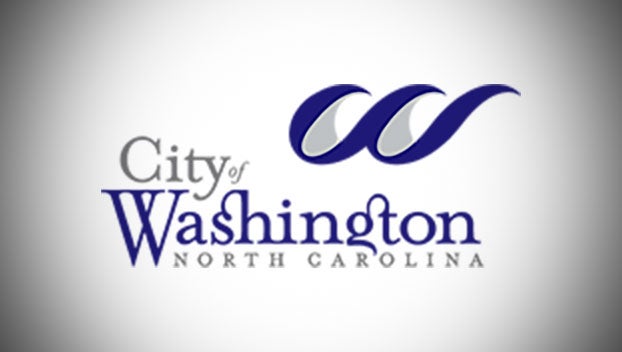Workers using technology to increase safety in work zones
Published 5:48 pm Tuesday, April 9, 2019
GARNER — New tools are at the disposal of North Carolina Department of Transportation contractors around the state, and they’re not being used to construct roadways, but save the lives of countless workers.
“At interstate and freeway project sites our contractors have been given clearance to use new technologies to increase driver awareness in our work zones,” said State Work Zone Engineer Steve Kite.
At the Brevard Road Project off N.C. 191 in Asheville, Kite and Governor’s Highway Safety Program Assistant Director Dr. Cheryl Leonard kicked off the annual Work Zone Awareness Week which is underway this week.
“This year’s national theme is ‘Drive Like You Work Here’ and we need drivers to understand and respect our work space as they do their own,” Kite continued.
“We really need drivers to slow down, don’t drive distracted and use extra caution when behind the wheel,” Leonard said. “We are highlighting this message by educating drivers about some of the latest technologies we’ve been using over the last several months. We also need drivers to know that raising awareness includes increasing enforcement, which will be taking place throughout the entire week in area work zones.”
“Not all work zones are behind concrete barriers, sometimes the only barrier between workers and vehicles traveling at top speeds an hour are barrel cones,’ said NCDOT Division Engineer Mark Gibbs, who manages seven mountain-area regions. “We need drivers to act like they are behind the wheel of a deadly machine, because they can be if they are not following the rules of the road.”
Recent technologies in place to help address challenges in work zones at all interstate and freeway locations include:
- Digital Speed Limit Signs — Allow speed limits to be automatically adjusted for site conditions. These encourage motorists to look for the correct speed limit each time they pass through a work zone and to comply with the displayed limit.
- Work Zone Presence Lights — Balloon-type lights used to give the work zone a large visual footprint. These specifically target drowsy and distracted drivers as well as excessive speeders.
- Sequential Flashing Lights — Installed on barrel cone drums forming the merging lane closure, they flash in sequence to alert drivers of a change in conditions as well as point out the direction to merge.
- Connected Technologies — Navigational applications for commuters, which give them real time construction information like, OnStar, WAZE, Google Maps, HERE, etc.
- “We need to ensure that our NCDOT workers and our contractor crews working to improve our state’s infrastructure are in a safe environment,” said NCDOT Division Engineer Pat Ivey, who manages a five-county construction region of the Triad.
One of his Division 9 projects is one of three locations around the state chosen to highlight some of the new technology being used to save workers. - “Raising the level of consciousness of drivers is exactly what we need to keep pushing these projects forward and ultimately improve lives across North Carolina,” Ivey added.
Work Zone Safety Tips:
- Plan ahead. Work zones account for an estimated 10 percent of overall congestion and nearly 24 percent of unexpected freeway delays. Expect delays, plan for them, and leave early to reach your destination on time. When you can, avoid work zones altogether by using alternate routes.
- Obey road crews and signs. When approaching a work zone, watch for cones, barrels, signs, large vehicles or workers in bright-colored vests to warn you and direct you where to go.
- Slow down. Look for signs indicating the speed limit through the work zone. Keep a safe distance away from the vehicle ahead of you and follow the posted speed limit.
- Move over. Most state move-over laws apply when passing work crews and official vehicles parked on the shoulder with flashing warning lights.
- Avoid distractions. Keep your eyes on the road and off your phone.
- Watch for sudden stoppages. In 2017, 25 percent of fatal work zone crashes involved rear-end collisions.
- Watch for large vehicles. Don’t make sudden lane changes in front of trucks that are trying to slow down. In 2017, 50 percent of fatal work zone crashes involving large trucks or buses occurred on rural roadways. Between 2013 and 2017, fatal work zone crashes involving large trucks increased by 43 percent.
The Work Zone Safety Awareness campaign complements NC Vision Zero initiative, which aims to save lives on North Carolina roadways. The goal is to reach zero traffic-related fatalities through coordinated agency-to-agency efforts that help reduce risky driving behaviors by changing the overall traffic safety culture. No loss of life is acceptable.
The Governor’s Highway Safety Program promotes highway safety awareness through grants and safe driving initiatives like: Click It or Ticket, BikeSafe NC, Watch For Me NC, Speed a Little. Lose a Lot, and North Carolina’s Vision Zero initiative.
Please support these efforts by visiting ghsp.nc.gov and following @NCGHSP on Facebook and @NC_GHSP on Twitter and Instagram today and using these hashtags in social media posts: #WZAW, #Orange4Safety, #NWZAW, #NWZAW2019, #NCDOT, #NCGHSP.






